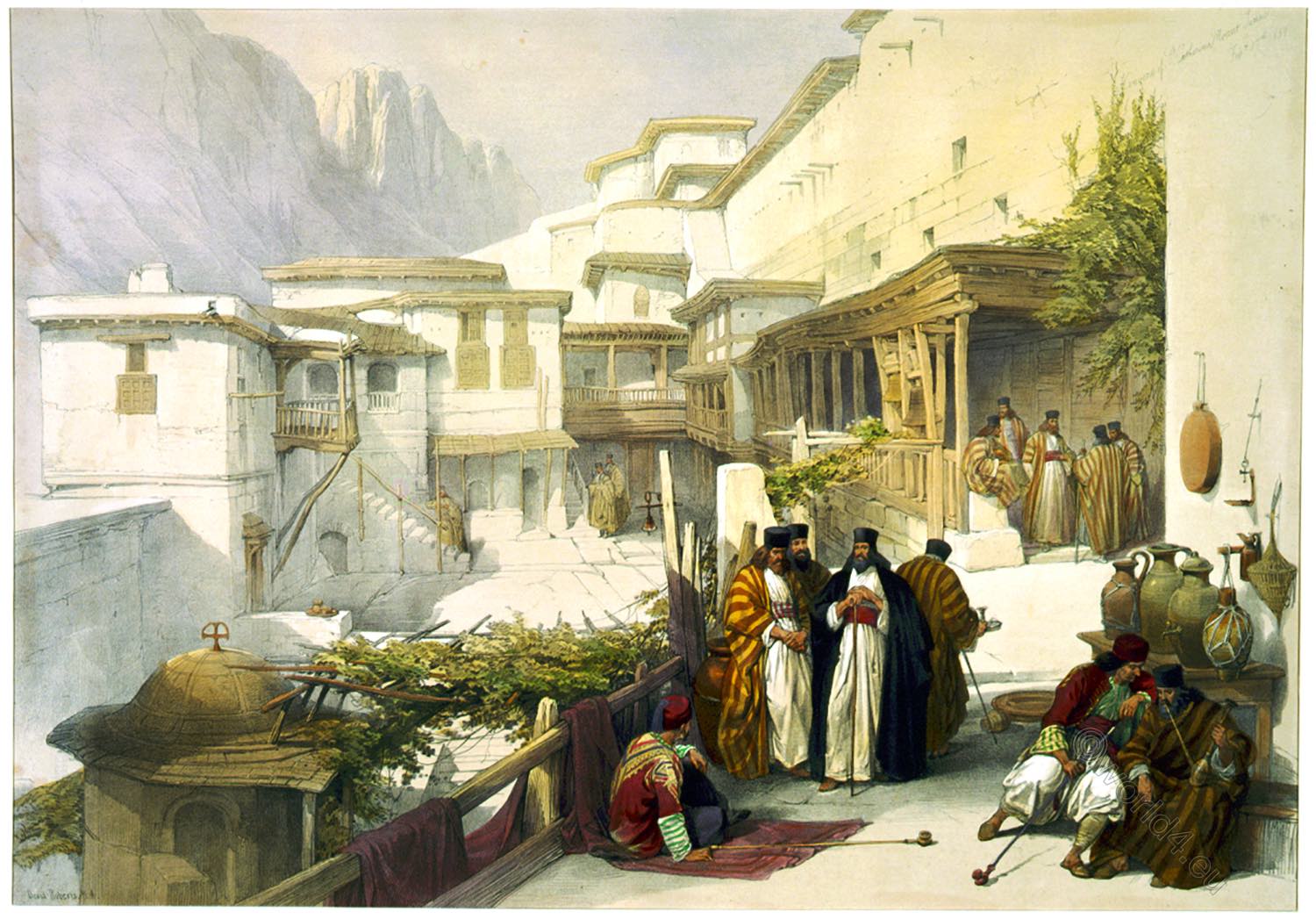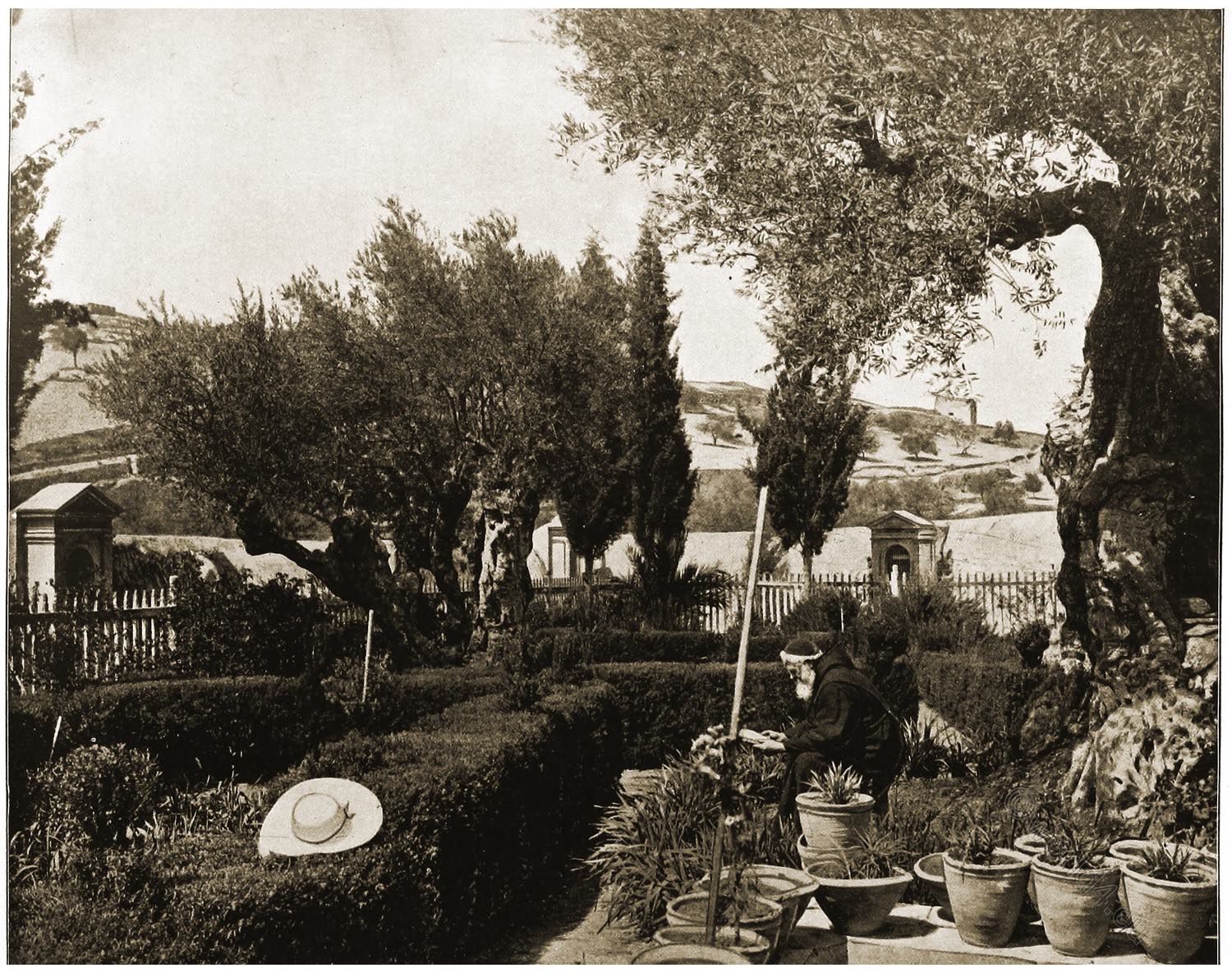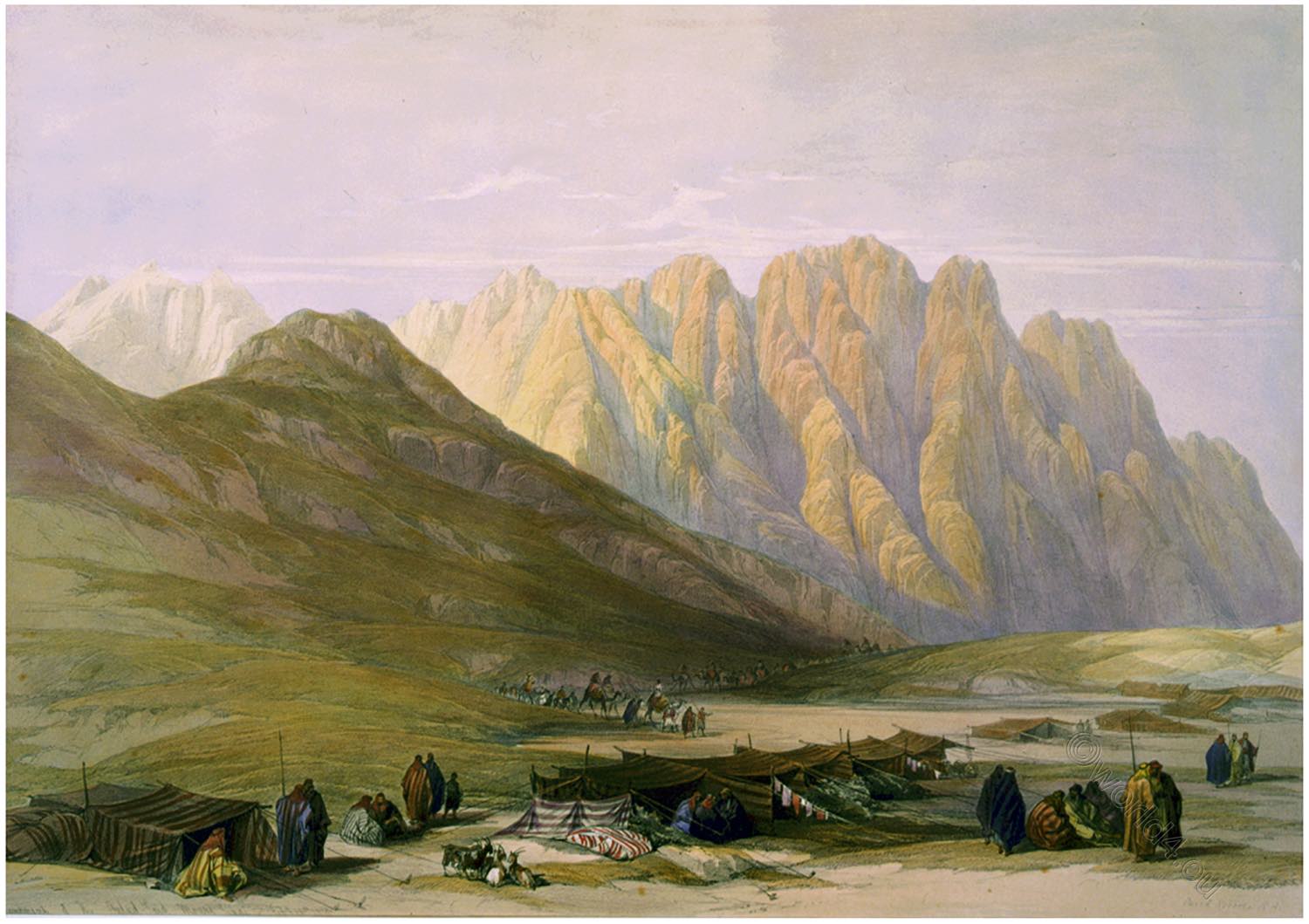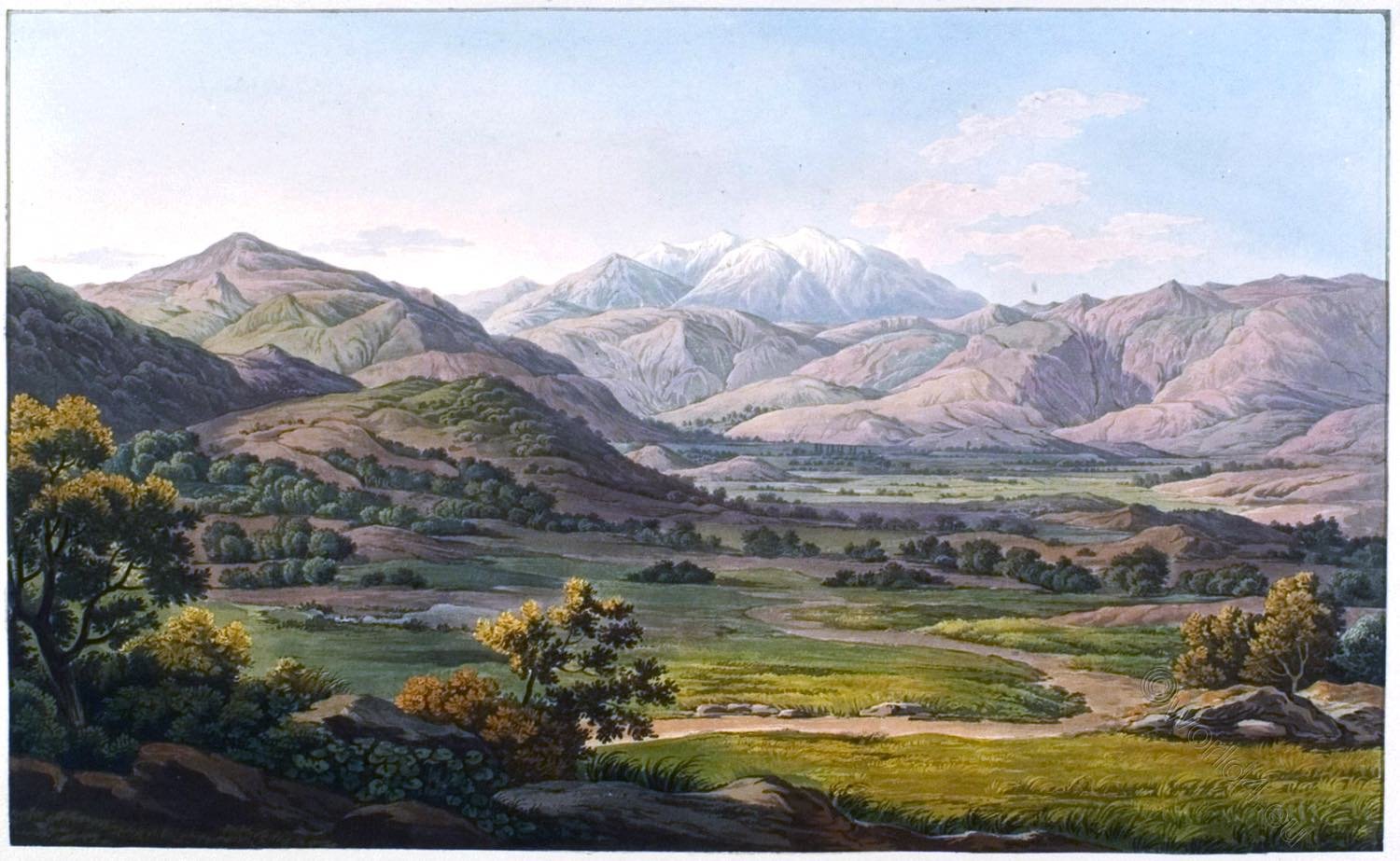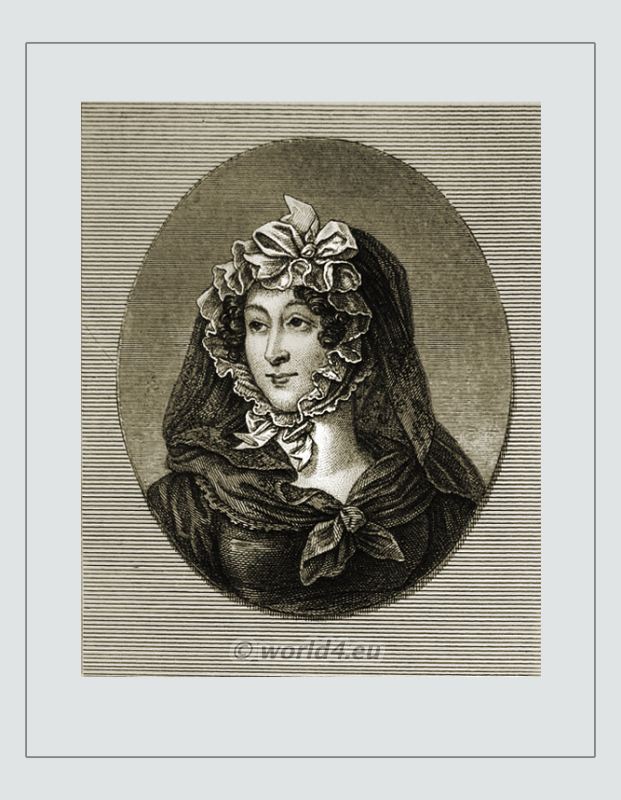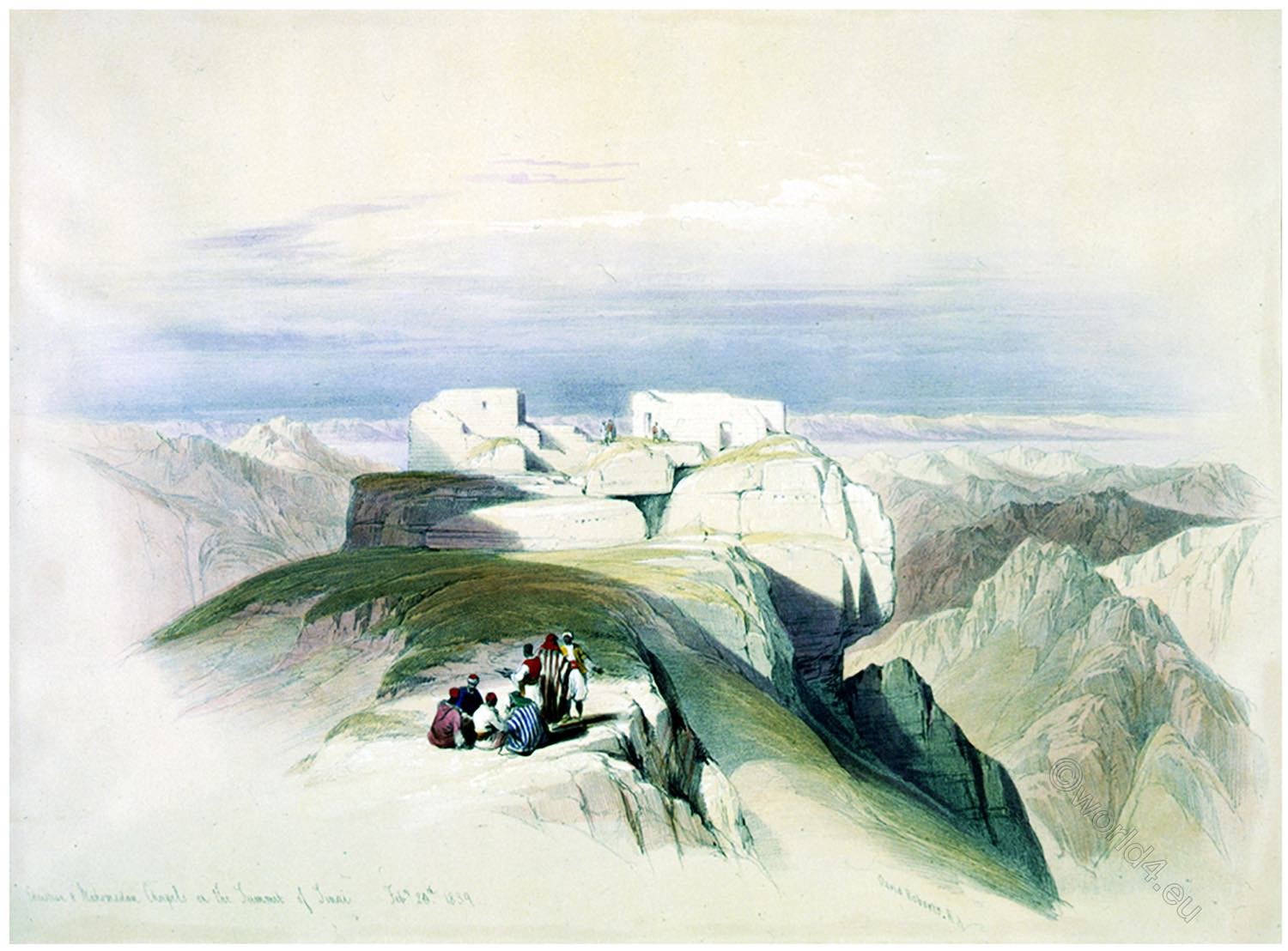
SUMMIT OF MOUNT SINAI. SHOWING THE CHRISTIAN AND MOHAMMEDAN CHAPELS
by David Roberts
Those Chapels are placed on what is traditionally regarded as the summit of Sinai, but the peak distinguished as Mount St. Catherine has a greater elevation. The ascent from the Convent employs about two hours, and the spectator is rewarded by a scene of the most striking magnificence. Around, beneath, and above, all is grandeur; he stands as in the Alps, in the midst of a region of Mountains; but with a feature of beauty wanting in the Alps—the expanse of a brilliant sea, a part of the Gulf of Aqaba (Gulf of Eilat) being in sight. The Chapels on the summit are in singular juxtaposition (Christian and Mohammedan), apparently one structure (that on the right in the View is the Christian, the left the Mohammedan); but both in a state of ruin from neglect and exposure to the storm.
The Mountain is held sacred by the Mohammedans; for the legend tells, that when the Prophet rode on the sacred Camel to Ararat and back in one night, he rested, in passing, on Sinai, and the mark of the Burack, or Camel’s foot, where it touched the mountain, is still shown by his followers. The Artist, having heard this tradition, asked his guide from the Convent to point it out to him ; but the holy brother of St. Catherine did his bidding very reluctantly. 1) It is a few yards below, and beyond, the Chapel to the right. It has the exact form, and is not larger than the impression which the foot of a camel would make.
Marks, thus connected with fable, are not infrequent in religious legend. On the summit of a Ceylonese mountain, the shape of a gigantic foot is an object of native homage, as exhibiting the parting step of Adam! The freaks of Nature are easily seized by fancy or modified by art; and the Mahometan is as much entitled to the exercise of his imagination as the Monk.
1) Roberts’s Journal.
Source: The Holy Land, Syria, Idumea, Arabia, Egypt, & Nubia, by David Roberts (British, 1796-1864), George Croly, William Brockedon. London: Lithographed, printed and published by Day & Son, lithographers to the Queen. Cate Street, Lincoln’s Inn Fields, 1855.
Continuing

